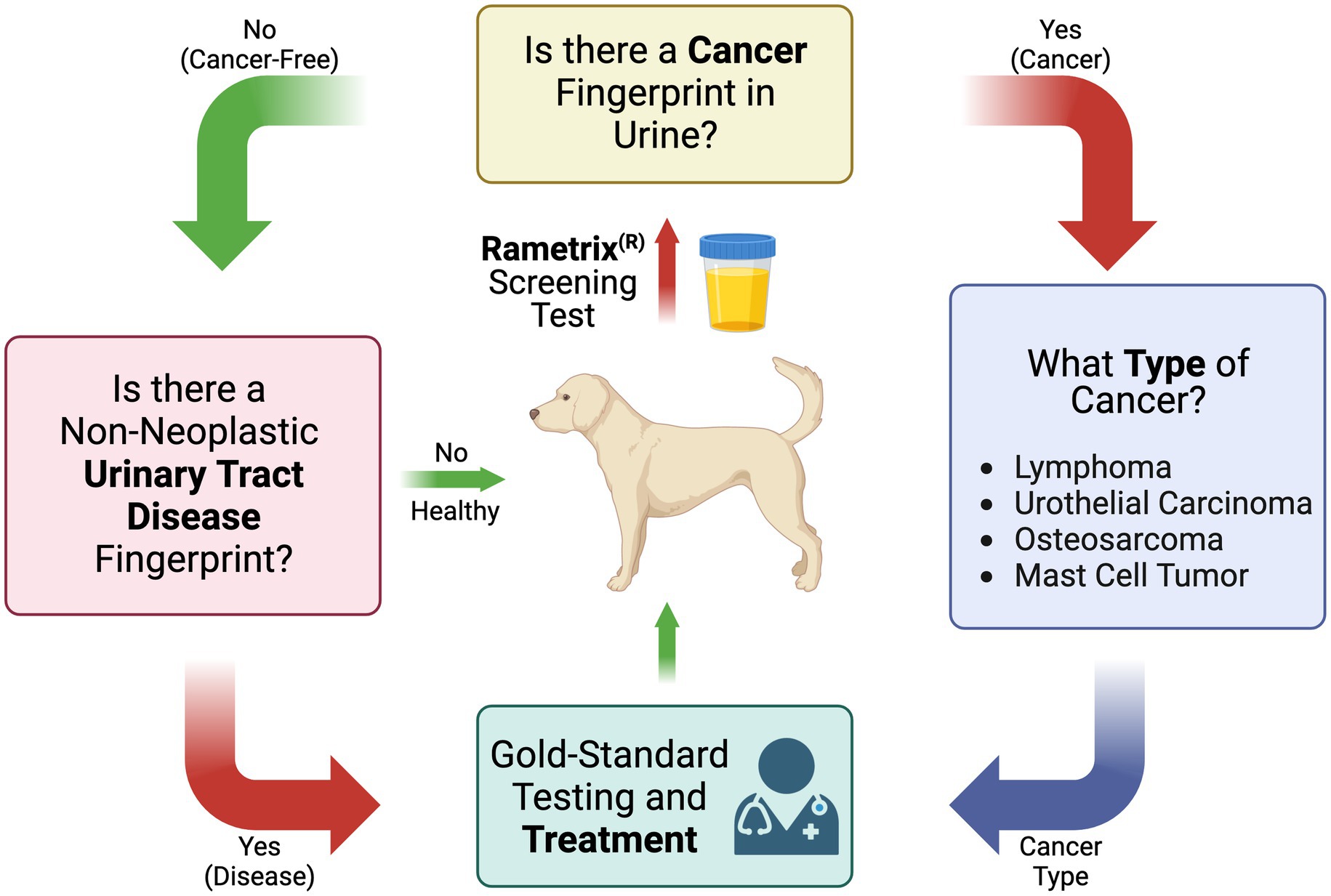2024-02-07 バージニア工科大学(VirginiaTech)
◆工学部、農学・生命科学部、バージニア・メリーランド獣医学大学の研究者らは、犬の尿を使用した新しい、非侵襲的で迅速ながんの早期検出を可能にするテストを開発しました。現在、腫瘍やがんタンパク質を検査する3つのゲノム血液検査がありますが、尿を使用した非侵襲的な迅速検査は現在存在しませんでした。チームの有望な結果は、『Frontiers in Veterinary Science』に掲載されました。
<関連情報>
- https://news.vt.edu/articles/2024/02/coe-innovative-dog-cancer-screening.html
- https://www.frontiersin.org/articles/10.3389/fvets.2024.1328058/full
迅速ラマン分子尿検査を用いた犬のがん検出
Cancer detection in dogs using rapid Raman molecular urinalysis
John L. Robertson,,Nikolas Dervisis, John Rossmeisl, Marlie Nightengale, Daniel Fields, Cameron Dedrick, Lacey Ngo, Amr Sayed Issa, Georgi Guruli, Giuseppe Orlando, Ryan S. Senger
Frontiers in Veterinary Science Published:07 February 2024
DOI:https://doi.org/10.3389/fvets.2024.1328058

Introduction: The presence of cancer in dogs was detected by Raman spectroscopy of urine samples and chemometric analysis of spectroscopic data. The procedure created a multimolecular spectral fingerprint with hundreds of features related directly to the chemical composition of the urine specimen. These were then used to detect the broad presence of cancer in dog urine as well as the specific presence of lymphoma, urothelial carcinoma, osteosarcoma, and mast cell tumor.
Methods: Urine samples were collected via voiding, cystocentesis, or catheterization from 89 dogs with no history or evidence of neoplastic disease, 100 dogs diagnosed with cancer, and 16 dogs diagnosed with non-neoplastic urinary tract or renal disease. Raman spectra were obtained of the unprocessed bulk liquid urine samples and were analyzed by ISREA, principal component analysis (PCA), and discriminant analysis of principal components (DAPC) were applied using the Rametrix®Toolbox software.
Results and discussion: The procedure identified a spectral fingerprint for cancer in canine urine, resulting in a urine screening test with 92.7% overall accuracy for a cancer vs. cancer-free designation. The urine screen performed with 94.0% sensitivity, 90.5% specificity, 94.5% positive predictive value (PPV), 89.6% negative predictive value (NPV), 9.9 positive likelihood ratio (LR+), and 0.067 negative likelihood ratio (LR-). Raman bands responsible for discerning cancer were extracted from the analysis and biomolecular associations were obtained. The urine screen was more effective in distinguishing urothelial carcinoma from the other cancers mentioned above. Detection and classification of cancer in dogs using a simple, non-invasive, rapid urine screen (as compared to liquid biopsies using peripheral blood samples) is a critical advancement in case management and treatment, especially in breeds predisposed to specific types of cancer.

